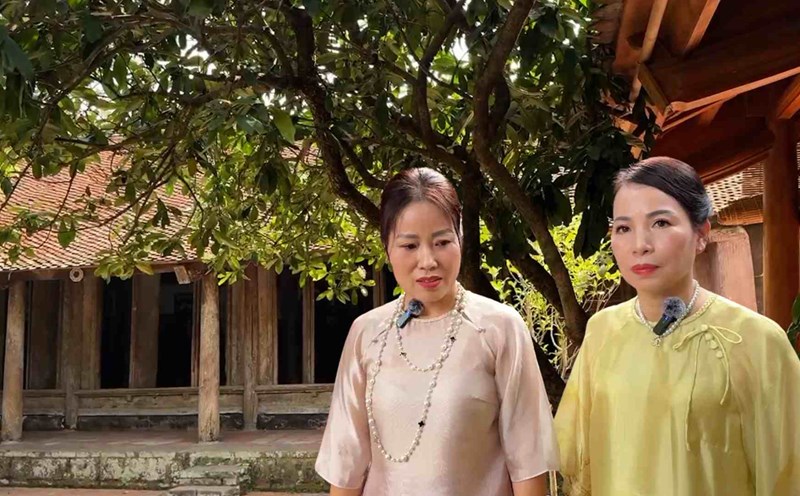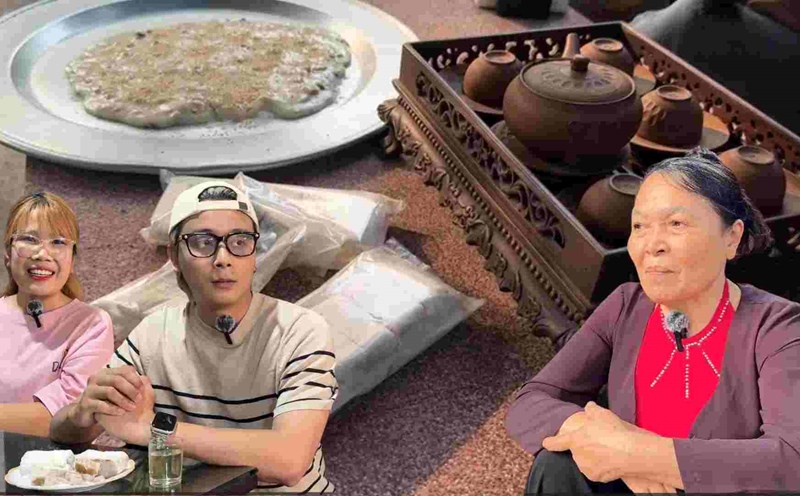The village still retains its ancient values.
Amidst the modern pace of life, the ancient village of Duong Lam (Son Tay, Hanoi) still retains its rustic, peaceful beauty and long-standing cultural values.
Among them, the craft of making sticky rice sauce - a type of sauce fermented from sticky rice and soybeans - stands out as a typical flavor of this land, containing both the quintessence and soul of many generations.
The family of Mr. Ha Huu The (Sui hamlet, Mong Phu village, Duong Lam commune) is one of the few families that still maintain the traditional craft of making soy sauce in the village. Notably, Mr. The is currently living in an ancient house that is over 300 years old - a familiar destination for those who want to learn about the culture and history here.

When talking about the soy sauce making profession, Mr. The shared that this profession has existed for many generations, originating from the self-sufficient lifestyle of Vietnamese farmers.
According to Mr. The, in the past, our ancestors did not buy or import goods from other places but produced their own necessities. Thanks to the combination of natural energy and secrets passed down through many generations, the people of Duong Lam have created batches of rich soy sauce, carrying the flavor of heaven and earth.
“To create delicious, smooth batches of soy sauce, soy sauce makers must be skillful and carefully prepare everything from the ingredients to the fermentation method. Soy sauce ingredients include seven indispensable elements: sticky rice, soybeans, green beans, water, salt, sunlight and the unique fermentation secret of the craft village,” Mr. The shared.
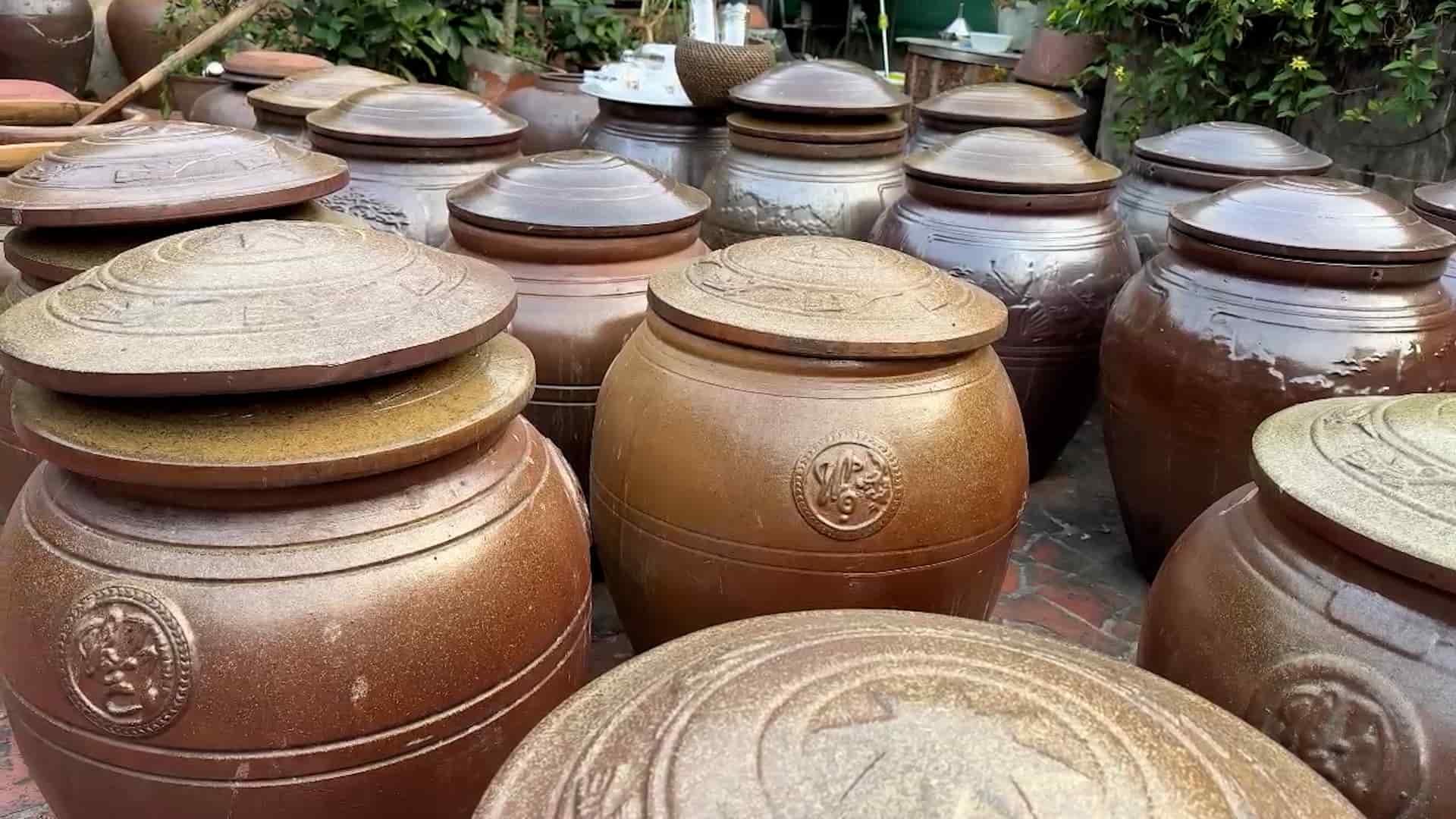
The rice used to make soy sauce is the golden sticky rice or other delicious sticky rice varieties, steamed into sticky rice, then placed on a tray to let it naturally grow green mold for a few days. The beans are roasted until they have a beautiful golden color and a characteristic aroma, then ground and dried overnight. The soy sauce is soaked in a ceramic jar with water from the village's laterite well, a type of water that is guaranteed to be clear and cool enough.
Once the mold has reached the required level, the soy sauce maker begins the mixing process. First, brine is poured into the jar, then soy sauce is added, and finally the mold. Everything is stirred well so that the mold is completely mixed with the brine and beans, creating a naturally fermented soy sauce mixture, crystallized from both the quintessence of the ingredients and the traditional secrets of the people of Duong Lam village.
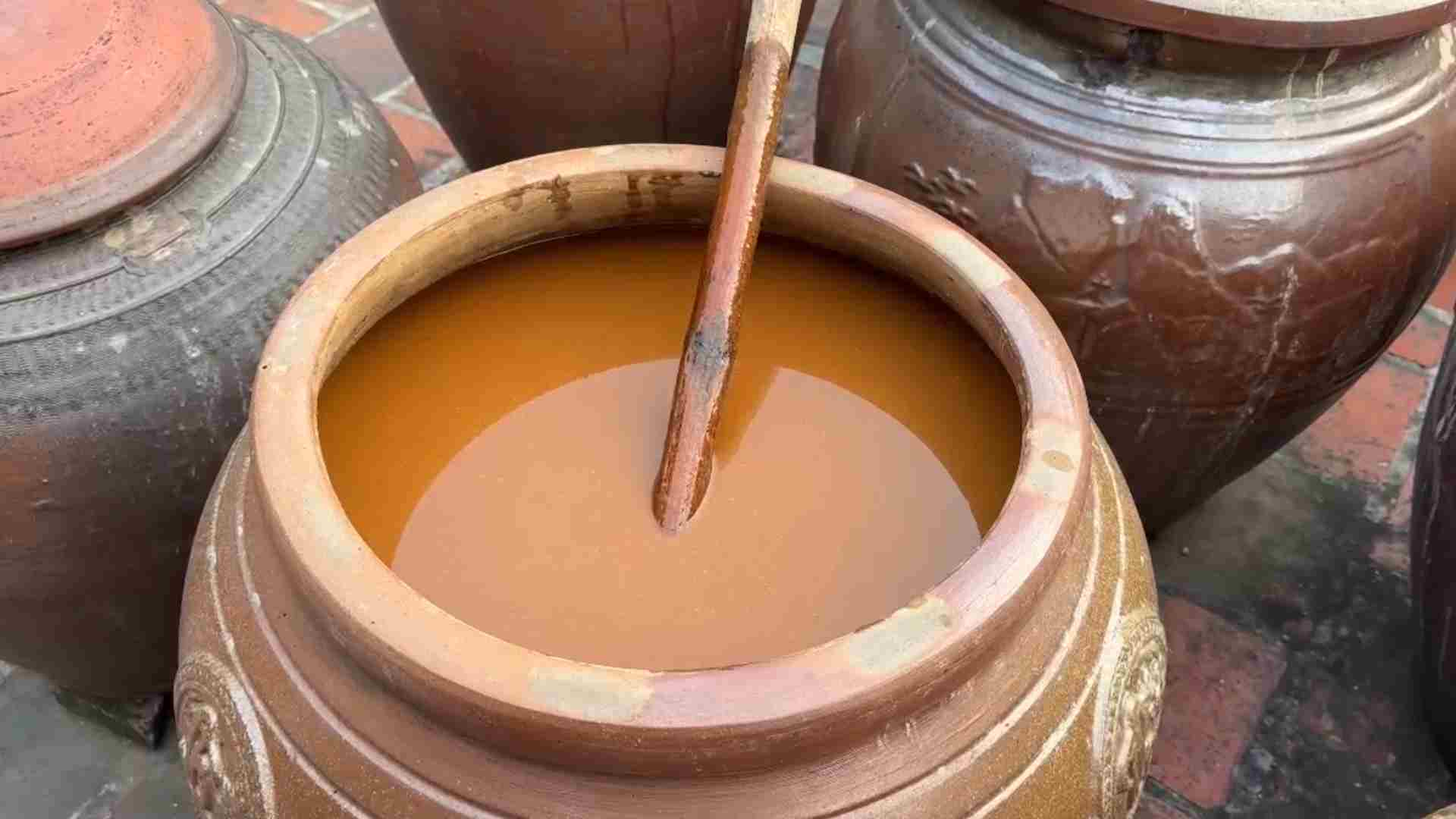
Every morning, Mr. The opens the lid of the jar, stirs the soy sauce from the bottom up, then dries it in the sun all day and closes it again in the evening. With constant perseverance for about a month, when the musty smell of the soy sauce has evaporated, the soy sauce settles to the bottom, and the juice turns yellow like mustard flowers, that is when the soy sauce has reached its perfect, delicious flavor.
Efforts to preserve the traditional craft of making soy sauce
Nguyen Sinh Hung (Ung Hoa, Hanoi) said that he had heard that Duong Lam sticky rice sauce is a typical spice in Vietnamese cuisine, contributing to the rich flavor of dishes such as braised fish, bean sauce, or as a dipping sauce for meat and vegetables. Therefore, he chose to buy some bottles of sticky rice sauce as gifts for family and relatives.
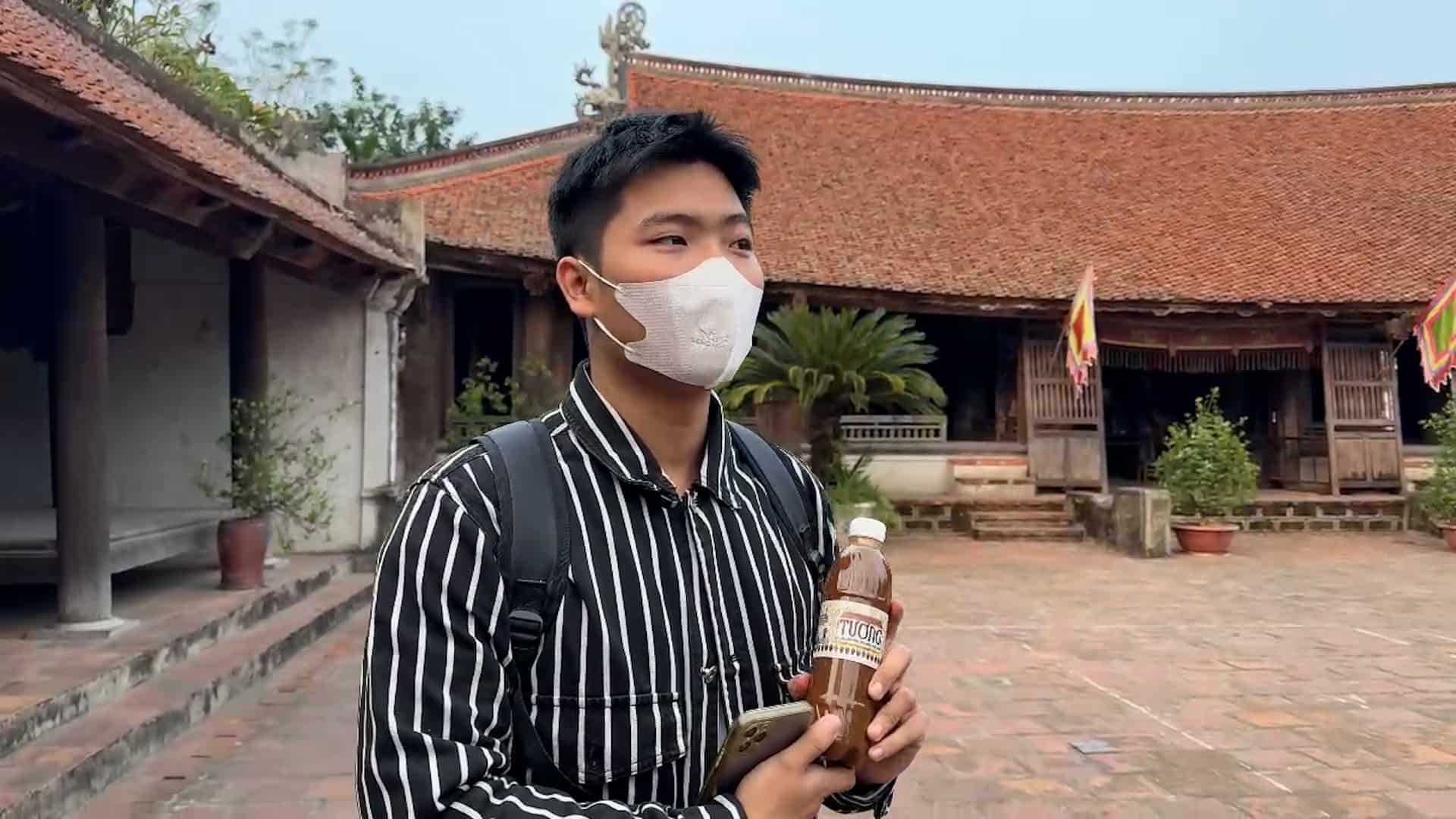
''This is a traditional soy sauce made by the people of Duong Lam village. Through research, I learned that the process of making soy sauce is very elaborate and requires great care. I really appreciate the special dishes of our nation,'' added Hung.
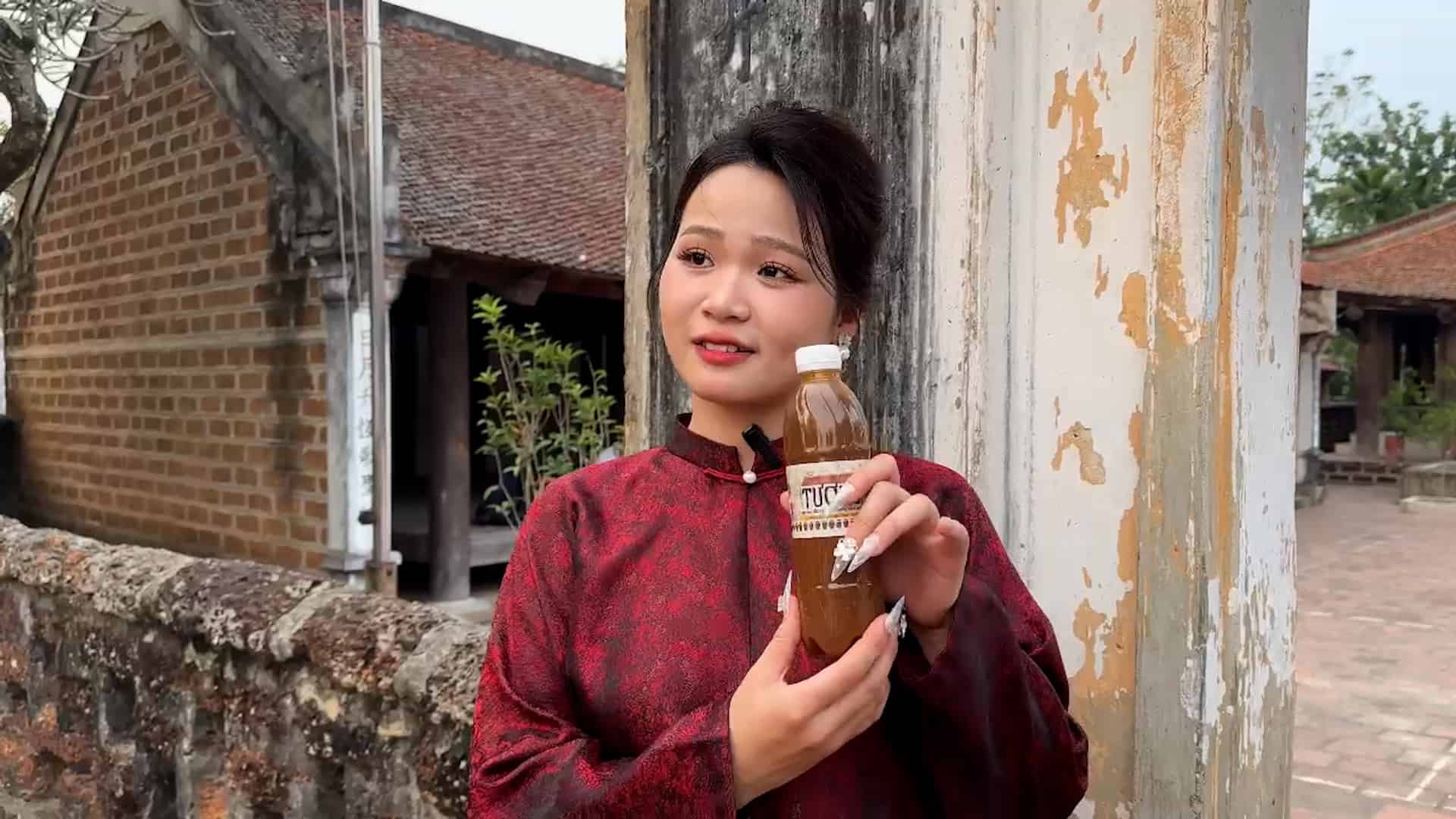
Not only Hung, many young people when coming to Duong Lam village are also very excited and curious about the ingredients and process to make this rustic and traditional dish.
“When people are passionate, they stick with the profession until the end of their lives. Elderly people in their 70s and 80s still carry water, brew soy sauce, and work tirelessly even though their income is not high. This is both a joy and a connection to the craft village,” Mr. Ha Huu The shared.
According to Mr. The, although he knows that the younger generation in his family is not interested in the traditional soy sauce making profession, he still hopes and encourages his children and grandchildren to try to preserve the profession, hoping that Duong Lam sticky rice sauce will not be lost.
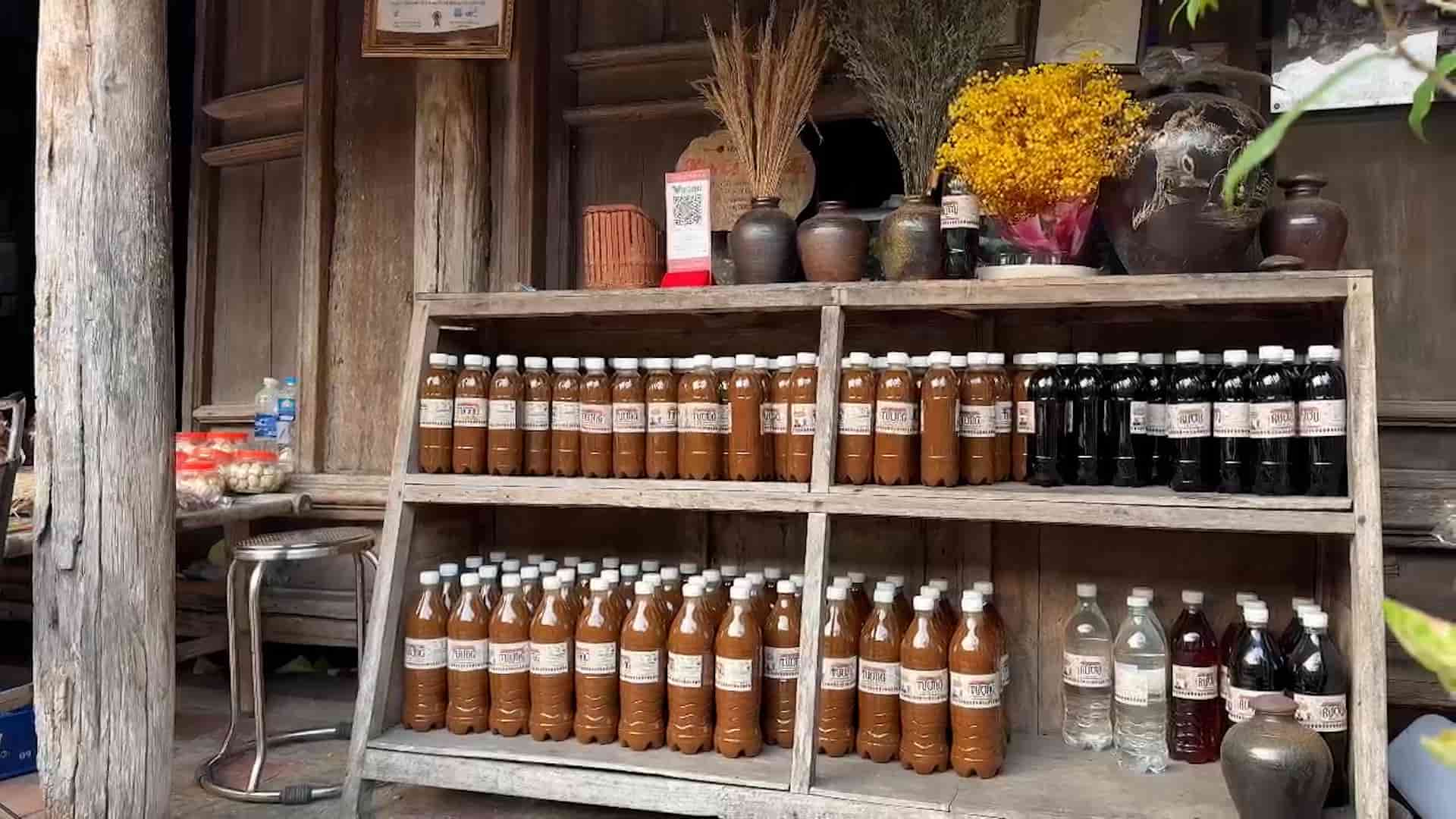
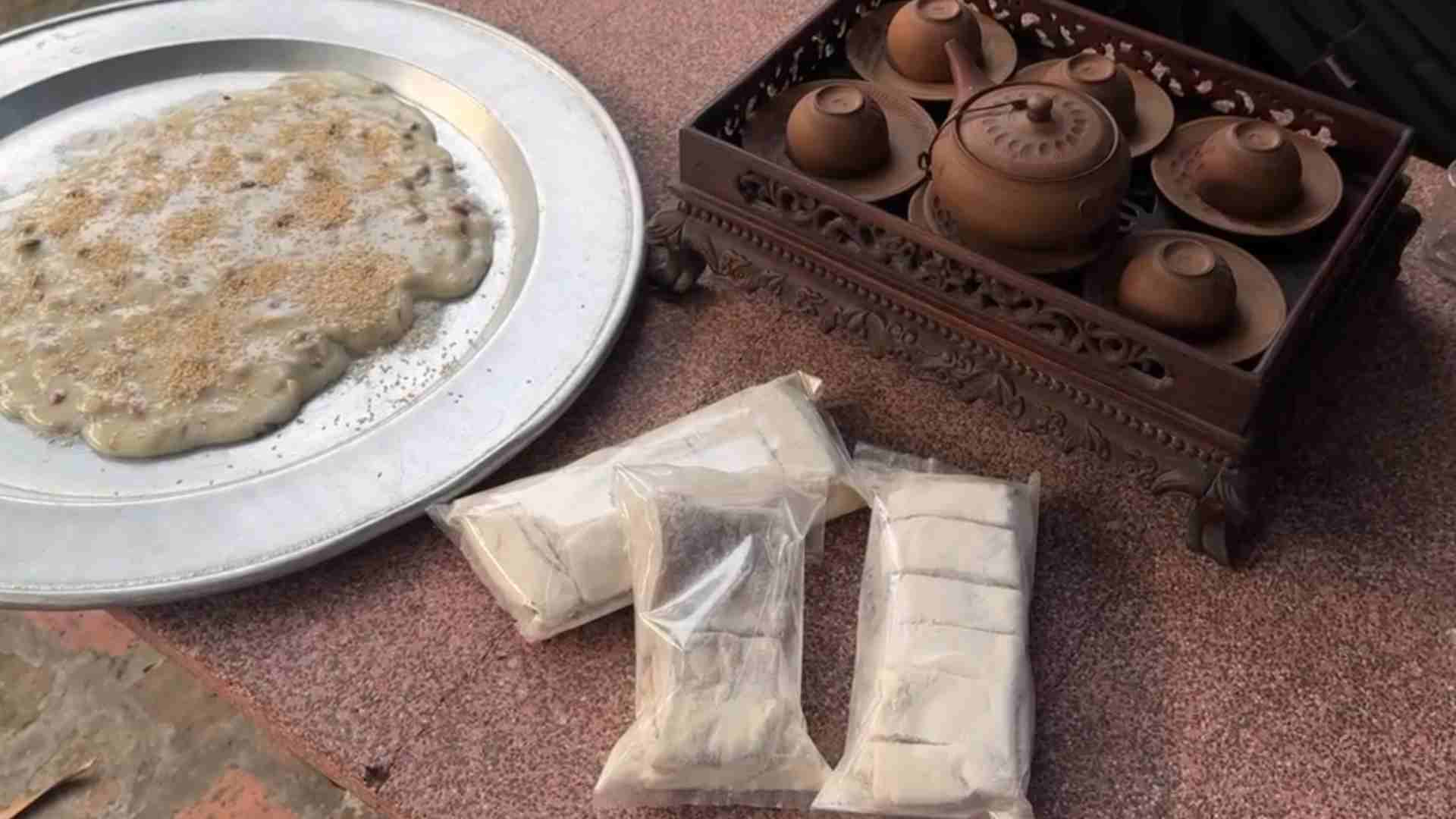
Tourists visiting Duong Lam village are surprised by the rich aroma of sticky rice sauce. Once trying this traditional flavor, many people cannot help but linger and remember it forever.
"It can be said that Duong Lam sticky rice sauce is not only a spice, but also a typical hometown flavor, imbued with the cultural identity of the ancient village," Mr. Ha Huu The added.

